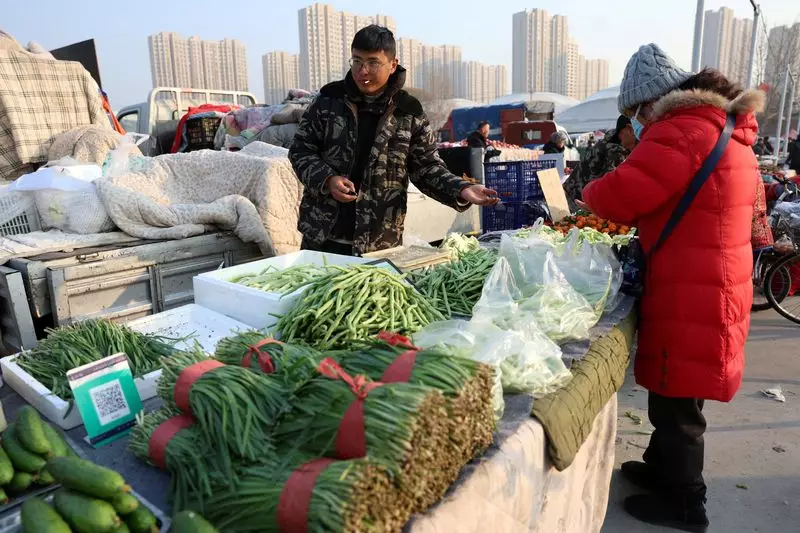Despite being one of the world’s largest economies, China’s economic growth has shown signs of stagnation and vulnerability as evidenced by recent consumer and producer price indices. The National Bureau of Statistics’s latest data releases indicate a slow growth in consumer prices and a deeper contraction in producer prices, exposing the challenges the country faces as it navigates a complex economic landscape influenced by both domestic and global factors.
In October, China’s consumer price index (CPI) recorded a modest increase of 0.3% year-on-year, which marks the slowest rise in four months. This contrasts sharply with the previous month’s 0.4% growth and fell below economists’ expectations, presenting a concerning picture for consumer sentiment. The modest CPI growth underscores that the stimulus measures enacted by the government, specifically those initiated prior to the Golden Week holiday, have yet to show any significant impact on domestic demand. With consumer confidence waning, exacerbated by uncertainty in the real estate market, the prospects for robust economic activity remain bleak.
This economic climate is reflective of broader deflationary pressures gripping the Chinese economy. Core inflation, which eliminates food and fuel price fluctuations, also saw an increase, but only to 0.2%, still indicating subdued underlying demand. Such figures reveal that even though some price stability has been achieved, the consumer base is not sufficiently buoyant to foster significant economic expansion, leading analysts like Bruce Pang to question the timing and efficacy of current policies.
Moreover, the deeper deflation in producer prices, which fell by 2.9% in October, highlights a significant contraction within fundamental industrial sectors. The critical sectors affected include petroleum and natural gas, as well as the automotive and chemical manufacturing industries. The pronounced drop in factory-gate prices reflects a nationwide cooling of demand, limiting the ability of factories to recover their costs. Consequently, producers are forced to hold back on capital investments, stymying economic growth pathways.
Analysts suggest that the contraction isn’t solely a function of domestic failures but is also symptomatic of global market trends—which may be particularly pronounced if global demand continues its downward spiral. Moreover, with significant segments of Chinese households’ wealth tied into a declining real estate sector, consumer expenditure remains crucially restrained. This interdependence between consumer confidence and housing market stability is particularly troubling, as any continued softness may prolong deflationary trends across the entire economy.
In response to these developments, Beijing has unveiled a significant stimulus package amounting to 10 trillion yuan (approximately $1.4 trillion). However, the approach appears more nuanced than expected, focusing on alleviating local government debt burdens primarily rather than directly fueling consumer spending or investment. This has left many analysts skeptical about the efficacy of the measures in spurring macroeconomic growth in the short term. Finance Minister Lan Foan did indicate that further stimulus focused on tax policies in the housing market was forthcoming, which may restore some level of consumer confidence if executed effectively.
However, lingering uncertainty surrounding upcoming US political dynamics, including a potential return of Donald Trump to the presidency, raises questions about strategic timing regarding fiscal maneuvers. Analysts speculate that Beijing may be conserving its economic policy artillery for future engagements, potentially weighing the landscape of international relations and trade negotiations against its domestic needs.
Looking ahead, forecasters predict that China’s headline consumer inflation may barely exceed 0.8% next year, while producer prices are unlikely to recover until late 2025 at the earliest. Such projections paint a sobering picture, suggesting that, despite ongoing policy interventions, the road to sustainable economic recovery may be prolonged. A critical analysis of these economic indicators reveals that while stimulus measures may be necessary, they must also be coupled with more decisive action to promote consumer and investor confidence.
While there remains potential for economic recovery, the current data suggests a significant uphill battle for the Chinese economy. Addressing the underlying issues of consumer sentiment and industrial productivity will be crucial to reinvigorate growth and stabilize the economy in the coming years. The interplay between domestic policy decisions and external economic conditions will likely shape the trajectory of China’s economic prospects.

